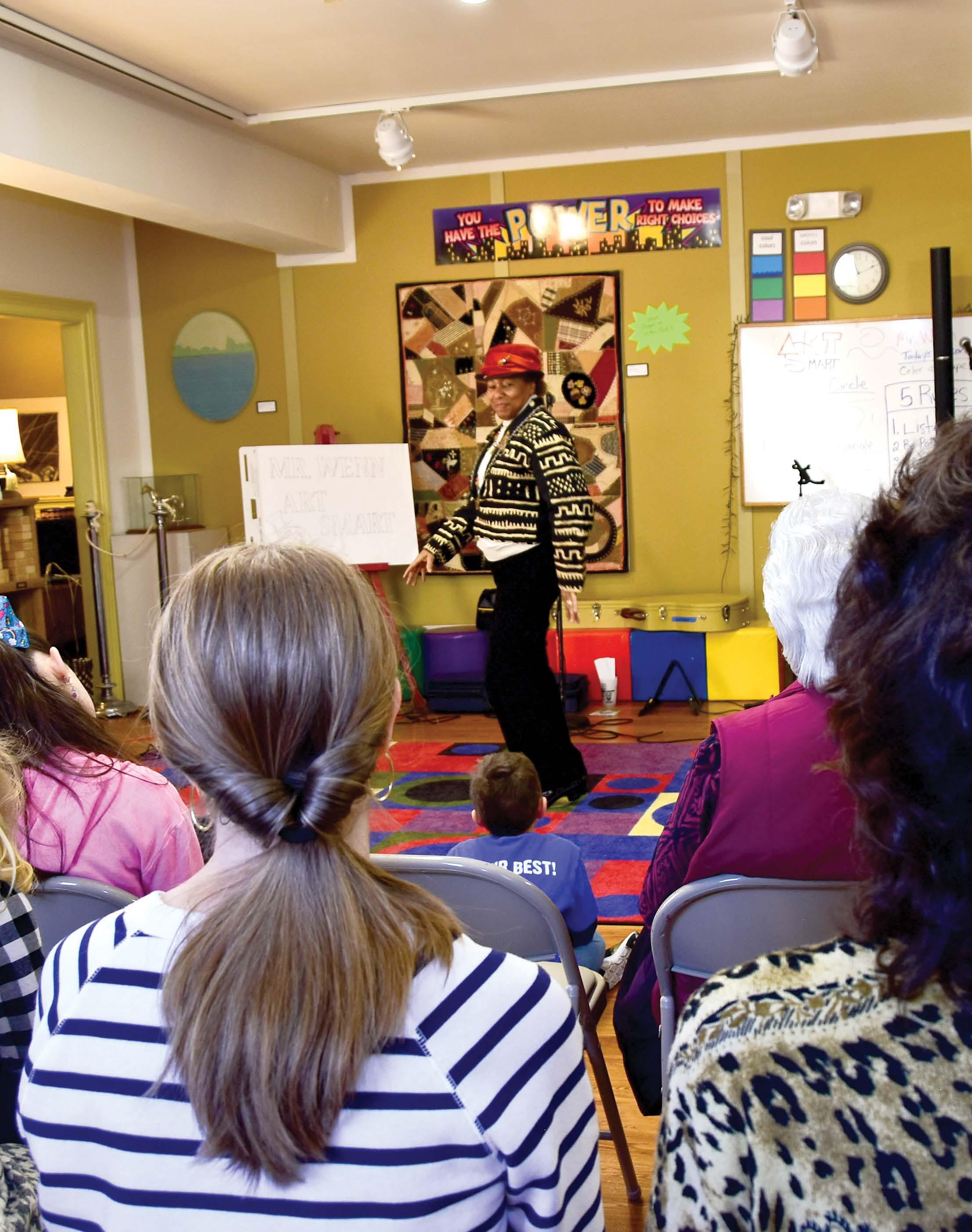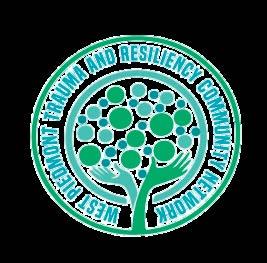
















JANUARY 2023
CEO Andrew Scott Brooks scott@showcasemagazine.com
EDITORIAL DIRECTOR
Paul Seiple | paul@showcasemagazine.com
GRAPHIC DESIGNER Kim Demont | demontdesign@verizon.net
FINANCE MANAGER Cindy Astin | cindy@showcasemagazine.com

434.548.5335
753 Main Street #3, Danville, VA 24541 Phone 434.709.7349 info@showcasemagazine.com www.showcasemagazine.com




The Danville Storytelling Festival (DSF) is celebrating 21 years of spreading the words from local and regional storytellers. The festival grew from a vision of Dr. Fred Motley. Originally, it started as a one-day event to celebrate Black History Month.

“I wanted to preserve and incorporate the city’s African American presence and contributions into the Danville narrative,” Fred said. He reached out to some storytelling friends to “weave people, places, and times together,
creating an artistic tapestry that reflected the city’s history.”
The experience was a success and had participants and attendees asking when the next event would take place. “The next year, I expanded to include storytellers from across the region and storytellers from the city,” Fred said. After another strong event, Fred began thinking about the next chapter. “It was while planning the third
year that I realized it could become a festival. When I shared the idea with Lynn Bjarnesen, then executive director of the Danville Museum of Fine Arts and History, she asked if I would host the festival at the museum.”

The festival tells the narrative of the Danville community and neighboring areas. Fred continued, “The Danville Storytelling Festival is a family-oriented event that acts as an ‘Artistic Social Bridge’—bringing communities together and celebrating how we are all connected using the rich tradition of storytelling, performances, and activism.” Stories exist in every genre and walk of life, and there are lessons to be learned from them. “The festival is a lively day of intergenerational and diverse stories from all cultures told through music, dance and spoken words. Attendees get to experience them,” Fred added.
The longevity of DSF is an incredible feat. Fred attributed it to “the joy, laughter, education, entertainment, and the camaraderie among those gathered to listen and learn.”
Fred’s daughter, Dr. Monica Motley, Executive Director of DSF, added, “It’s also a genuine way in which we connect, even through our differences. Last year, we hosted the festival virtually and one of our questions to engage the audience was to name the best storyteller in their life and why. It was amazing to see over forty people immediately, in the chat, name family members and friends. The common denominator–it was the way the person told the story. Whether it was a tall-tale or personal memory, the best storytellers draw you into their world in a way that doesn’t leave you.” Fred summed it up, “Storytelling keeps life history alive.”
DSR rooted over twenty years ago, and now it’s branched out into a flourishing forest of inspiring tales. For Fred, it’s about having stories of the past, present, and future that need to be told. “Our lives should never feel desolated. We strive to have everyone leave with ‘Food for Thought,’” Fred said. Monica added, “Studies also show how healing and connective storytelling can be. All too often folks from minoritized backgrounds,
Continued to Page 10
especially, don’t get the opportunity to see themselves or tell their stories in a way that’s true to them. The festival proudly continues the millennia old tradition of storytelling, which brings communities together and keeps ‘unwritten’ stories alive by passing them from generation to generation.”
Community plays an important role in DSF’s staying power. “To date, we are one of a handful of ‘storytelling festivals’ in the state. We are the only storytelling festival in Southern Virginia,” Fred said. Word has traveled within the creative community. Fred continued, “DSF is a way to celebrate the brilliant artistry regionally.” People have traveled from artistic strongholds such as Durham, Richmond, and Washington D.C. to enjoy our local stories. “We also continue our commitment to host the festival in partnership with grassroot groups, regional artisans, local businesses, and civic organizations within the Dan River Region,” Fred added.
Griot is a name given to traveling poets, musicians, and storytellers who continue a tradition of oral history in parts of West Africa. Monica said, “The festival welcomes storytelling performers or ‘griots’ to share their art and connect performance with history, tradition, and activism.” DSF begins with an opening celebration and then moves into the performances. “The festival closes with a longstanding tradition of recognizing community members who have used their personal passions and stories to enact community change,” Monica added.
The Danville Storytelling Festival will take place on February 11, 2023 from 10am to 2pm at the Ballou Park Nature Center. DSF is free for the public. To continue the commitment to making the festival more accessible, people can also enjoy the festival via the “virtual experience” where pre-recorded performances also include ASL & Spanish Language interpretation.
Learn more about DSF at https://danvillestorytelling.com or email info@danvillestorytelling.com.





City Notes is a multi-issue series about revitalization in the area told through the words of Barry Koplen.
Would history repeat itself? That thought hadn’t occurred to me until David, a construction supervisor friend of mine, told me to look at the gray building across Craghead Street and down the street from the one his team had almost finished restoring. “The one with diamonds on it,” he said.
Raised concrete diamonds, painted a medium jade green, stood out in rows below, in between, and above the second and third floors; they ran the length of the front of the imposing building. Although it was empty, the building stood out as if it were a celebrity. The back lot of the building touched the sidewalk at the top of the hill on the street parallel to Craghead.
“That was Crowell Motors,” said David; the name had

been unchanged for about four generations. “The firstgeneration owner was friends with Henry Ford. Fords were shipped to the building and were finished there,” he said, before telling me that Ford and Crowell owned all the dealerships between Virginia and Florida.
“There was a ramp in the back where they would drive them into the building on the top floor,” he added. “Then a huge lift would bring them down to the first floor.”
Although I’d often walked past the front or the back of the building, I never looked for cars there.
While it was in its heyday, either I wasn’t in the market or I was more interested in Main Street movie theaters or my part-time job as a teenager at my Dad’s store, Abe Koplen Clothing, on North Union.
But, as I walked past the Crowell building this morning, I had no trouble imagining a dealership returning to the building just to be on Craghead.
That reminded me of the magnetic draw of the revitalized downtown. People wanted to see history come alive. And just a few blocks from the Crowell building, it was.
As I climbed to the second floor, the top floor, of one of the Dudley buildings, I was surprised to see that the studs were in place for the apartments there. What attracted my attention was the solid construction; rather than 2 X 4’s I’d seen in some other buildings, those walls were crafted of 2 X 6’s and 2 X 8’s. Wiring, windows, and plumbing would soon follow.
As the carpenters and I walked into the next building via an original brick archway, I entered the area where they would construct their next walls. When I asked a question about supporting the ceiling’s exposed rafters, the chief carpenter told me to follow him through a similar brick archway at the other end of the hall.
On a makeshift table sat the blueprints. He pointed to the wall he would build in the next few days. That wall would support the beam that ran the width of the part of the building we’d just left. Everything had started to make sense.
At least to me.
“Who’s going to live here?” asked the carpenter. “I’ve
wondered about that,” he said.
I assured him that, in a year’s time, he would see that lots of people would move downtown. “Next month, the Research building will open. That will bring hundreds of people down here. Many will want to live down here,” I said.
Then I pointed to my next stop, the building with the turret a block away.
“There will be a brewery there with a huge tasting room with a restaurant big enough to be rented as a banquet facility for special occasions,” I said. He liked that.
But I didn’t tell him that, just before entering the brewery complex, there would be a spa. “Apartments will be on the two floors above that,” I said.
Thanking them for the time they’d spent with me, I climbed down the stairs, left the building, and turned right. In less than three minutes, I was at the brewery I’d just talked about. Operating a lift outside, the man behind the controls said hello. Three stories above us, his lift was delivering a load of twelve-foot-long lumber. He waited as it was being unloaded, one board at a time.
We started talking about his roots in South Carolina, about his dad, a career soldier who got out after twentyseven years. Eventually, his father opened a few bars in Chapel Hill. Our conversation veered to a discussion of the Civil Rights Era and the changes he’d seen. I mentioned my book, No Gold Stars, based on my memoir about integrating Rev. Jesse Jackson’s alma mater in Greenville, South Carolina..
His smile told me he recognized my story about that book.
As I studied his royal blue jacket and baseball cap, I struggled to recognize him.
Until he asked whether I wanted some barbecue.
“I brought some today,” he said. Instantly, I remembered Nick, a short and stocky man with a heart of gold. “Come back around noon,” he said.
Checking time, I saw that would be in a few hours.





 BY LEE VOGLER
BY LEE VOGLER
As a new year begins, I thought it would be a good time to do a status check on where I am health-wise and where I’d like to go in the year ahead. Those who’ve read this column over the last several years know that from time to time I have mentioned wanting to eat healthier, lose some weight and, just for lack of a better term, feel better.
This past year was the first time I have truly taken that goal seriously and, mostly, stuck to it. The results were pretty darn good. From the start of 2022 to about midway through the year, I lost 20 pounds. For the rest of the year, I mostly maintained that weight loss, give or take a pound or two. Beyond that, I looked and felt

have so many people mention to me I looked like I had lost weight. It made that dedication and commitment in the early months worth it.
You might wonder how I did it. There’s no silver bullet. It took several things, but I’ll try to touch on them in case they might work for you, too. For one, I adjusted what supplements I took. Each day, I take a men’s multivitamin, along with ashwagandha, holy basil, and berberine. You can google the benefits of each. I also ramped up my daily water intake. I cut out sodas and highly processed foods (frozen meals, fast food, etc.). My diet is food high in protein and high in fiber. Also, stay away from added sugars

lose weight. A healthy amount of sleep each night also helps. I take a little melatonin most nights to help achieve this.
The diet and supplements alone won’t fully get you to where you need to be, though. It also takes exercise. I don’t do a ton, but enough to keep me active. From AprilOctober, I play softball a few nights a week. I try to walk at least 20 minutes every day. During workdays, I try to break the monotony by doing a rep of 10 push-ups every couple of hours. These are all little things, but they add up.
This has been my routine. The key word is “my.” It may work for you, but it may not. You need to find

Of course, if you were visiting Scotland, your list of places to see would resemble mine if it included visiting Loch Ness. If so, you might hope to see one of the Loch’s monsters for yourself. Also, you might think that just visiting the mysterious Loch would be a treat.
At least it was for me. Only one person was there. “Would you like a ride on my boat to tour the Loch?” he asked.
Minutes later, I was learning why it had been so difficult to verify the existence of the seemingly mythical creatures. “The water is so dark and so deep that sonar is useless,” he said, as we continued around the Loch.
On one side was an abandoned monastery. On another was a very old home that may not have been occupied. “Remember those sights,” said the boat’s captain.
The complete circle took about half an hour. In that time, not even a bream-sized fish broke the surface. Despite having not seen any signs of the Loch Ness monster, I didn’t doubt that I could have seen one. For a moment, I just stared at the unique loch. Unlike the
lakes in Virginia, Loch Ness was much too cold to jump into and swim.
“We’ll stop here for a moment,” the captain said. The boat was near the old house. Directly across the Loch was the abandoned monastery. “Look at this,” said the captain.
In his hand was an old Polaroid picture that had been taken from where the boat sat. “Do you see the monastery?” he asked as he pointed out that it was in the same alignment as we were then.
That’s when I studied the picture and noticed the long, thin head of a Loch Ness monster. Its head and neck reminded me of one of the plant-eating dinosaurs I’d seen drawings of.
“Did you take that?” I asked.
In a quiet voice, he answered, “Yes.” And that was over forty years ago. If I were to return, I doubt that anything would have changed.
Including the residents of Loch Ness.

The South is blessed with beautiful foliage, and crape myrtle trees are among the prettiest, in my opinion. Until two years ago, I had a beautiful one outside my kitchen window. In the spring and summer, the vibrant pink blooms covered the entire tree, and in the fall, the leaves were a brilliant yellow.
One winter day, I stayed in the car for a few extra minutes after church because I didn’t want to disturb the birds feeding at my bird feeder. The mourning doves and finches ate, but remained on alert for hawks and outside cats. They flew away when I opened the window to take a picture of them. The crape myrtle tree had lost all of its leaves, but I thought the bare branches of the tree looked so pretty against the blue sky. We were going through a hard time at work, with many cruelty investigations and many difficult people with whom to deal. On that bleak winter day, as I looked at the bare branches, I felt bleak.
And then I saw a beautiful red cardinal hiding in the branches. He was barely visible, but once I noticed him, he added a pretty splash of color to the picture. The entire tree seemed to be prettier.
No doubt about it, the news from around the world is sobering. Society seems to have become coarser, with a cacophony of voices vilifying anyone or any philosophy
that does not completely align with theirs.

During the hard shelter days, I look for red cardinals and I always find them. They come in the guise of a kindhearted person who brings a suffering stray animal to us, or a child who asks friends to bring gifts for the shelter to a birthday party, or a volunteer who spends time with the animals. Instead of seeing a lone red cardinal, I find flocks of them in my day.
Of course, let us not forget the companion animals who may not understand what we are experiencing, but they do what comes naturally to them—they nurture us and calm us. Perhaps nature has known all along that our companion animals are the best red cardinals of all.
This little girl is only six-weeks old. She would love to spend the New Year in your home!



